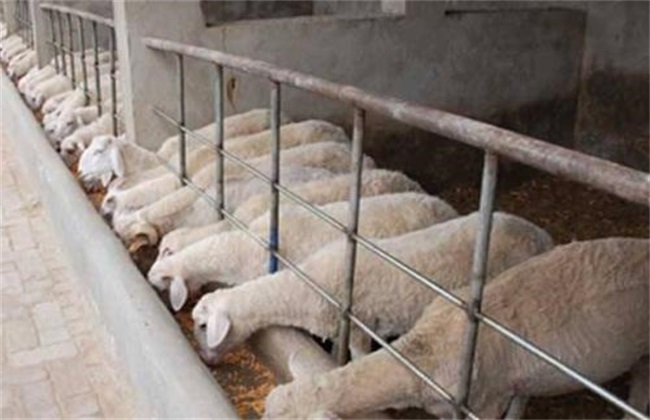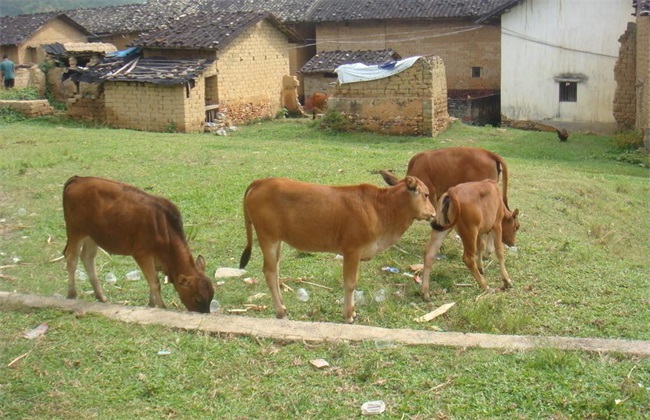How to manage the fattening period of beef cattle
Cattle is a very popular livestock in our country. The market price of beef in our country is very high, and it is also a kind of meat that many people like to eat very much. When breeding, many farmers want to be able to fatten up quickly, so as to improve the efficiency of breeding. Beef cattle need to be carefully managed during the fattening period. So how to manage the fattening period of beef cattle? The following editor will give you a brief introduction, let's have a look!

1. Free-range in small fences
During the fattening period, it is best to allow beef cattle to move freely in places where there is no fixed bed and no tie. Generally speaking, each cow should maintain a mobile space of about 7 square meters. The floor of the barn had better be made into grooves with cement to prevent the ground from slipping and causing the cattle to fall. Then the bed should be covered with an appropriate amount of sawdust or straw and other grain straw, the thickness should be kept at about 10cm, in order to provide a comfortable rest environment for beef cattle. Then replace the bedding grass regularly according to the degree of pollution.
2. Free drinking water
In the barn, we should also be equipped with automatic drinking fountains, or set up more sinks in the barn. Let the beef cattle can drink freely, whether it is the drinking fountain or the sink, its position is best placed on the opposite side of the trough. If the water fountain is installed, then the fence house of every 10 heads should be controlled at about two sets and the height should be kept at about 70 centimeters. If it is fattening in winter, then we should pay attention to avoid the freezing of water dispensers, do a good job of warming and cold prevention, and do not feed cold water, and raise the water temperature appropriately.
3. Free feeding
After entering the fattening period, beef cattle are fed about three times a day. In the morning, noon and evening, the feeding amount should ensure that each cow can eat fully, and it is best to have a small amount of residual feed in the trough. Therefore, after feeding, we should make a record of the intake of each cow in order to determine the amount of feed for the next time. Fine feeding and rough feeding can be fed separately, generally first rough feeding, and then fine feeding. Of course, you can also feed full-price feed, if it is prepared by yourself, then you must pay attention to control the proportion of fine feeding and coarse feeding as well as nutrition.
4. ventilation and dehumidification
Beef cattle like to grow in a dry environment and are afraid of dampness and heat, so when we build a cowshed, we should design it according to the local climate and environment. To ensure the span and height, the ventilation can be carried out at the same time. If the humidity and temperature in the barn is too high, it is very disadvantageous to the growth of beef cattle. Therefore, during the fattening period, we must pay attention to do a good job of ventilation and moisture drainage. Of course, the temperature should not be too low, too low temperature can easily cause beef cattle to catch a cold, affecting the fattening effect.
The above is a brief introduction of how to manage the fattening period of beef cattle. That's all for today's introduction. This article is for reference only. Thank you for your reading and support.
Related
- On the eggshell is a badge full of pride. British Poultry Egg Market and Consumer observation
- British study: 72% of Britons are willing to buy native eggs raised by insects
- Guidelines for friendly egg production revised the increase of space in chicken sheds can not be forced to change feathers and lay eggs.
- Risk of delay in customs clearance Australia suspends lobster exports to China
- Pig semen-the Vector of virus Transmission (4)
- Pig semen-the Vector of virus Transmission (3)
- Five common causes of difficult control of classical swine fever in clinic and their countermeasures
- Foot-and-mouth disease is the most effective way to prevent it!
- PED is the number one killer of piglets and has to be guarded against in autumn and winter.
- What is "yellow fat pig"? Have you ever heard the pig collector talk about "yellow fat pig"?



